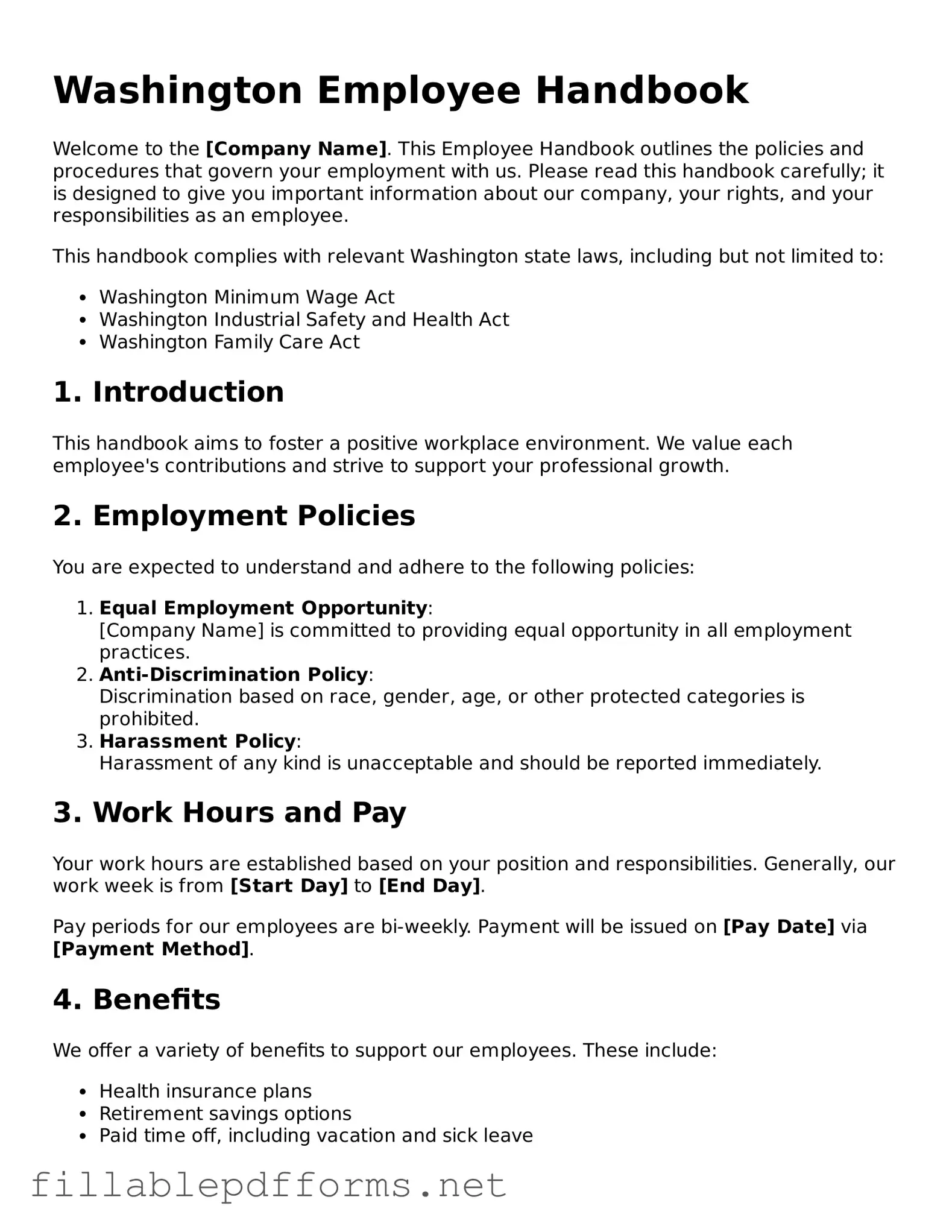Attorney-Verified Employee Handbook Form for Washington State
The Washington Employee Handbook form serves as a vital document that outlines the rights, responsibilities, and expectations for employees within a company. This form helps to create a clear understanding of workplace policies and procedures. By providing essential information, it fosters a positive work environment and promotes compliance with state laws.
Launch Editor Here
